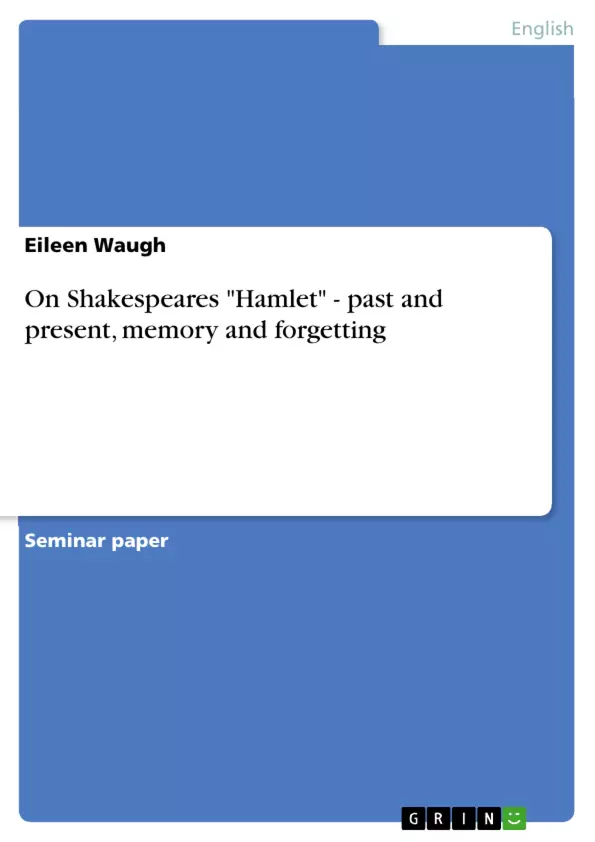Remembrance is the key factor to every person’s past life. So one can agree with Hammersmith in that without memory, which actually develops through remembrance, all our former experience vanishes and seems never to have existed. The only thing remaining is the ‘Here and Now‘, the single moment we experience something. Past and present do not have any further significance for our lives (cf. JSTOR trusted archives for scholarship). In his play Hamlet, William Shakespeare represents characters who seemingly have a past and whose lives are strongly influenced by this. In Hamlet ‘Shakespeare appears to have given exceptional care and thought to the problem of dramatizing the past’ (Alexander, 1971: 38). Through various techniques which will be discussed and developed in this essay, he gives his characters a whole life consisting of a past, which influences their present and, even more strongly, their future actions. This essay will show how Shakespeare manages to combine past and present without disturbing the common time-related order of the play. In addition, I will show how Shakespeare’s audience is informed about all the crucial events it has to know in order to understand what is happening on stage, although past and present time are presented in an uncommon way.
Inhaltsverzeichnis (Table of Contents)
- Remembrance and the Dramatization of the Past in Hamlet
- The Ghost as a Device to Convey the Past
- The Dumb Show as a Dramaturgical Tool
- The Impact of the Past on Present and Future
- Remembering and Forgetting: The Role of Memory
Zielsetzung und Themenschwerpunkte (Objectives and Key Themes)
This essay analyzes how Shakespeare uses dramatic devices to dramatize the past in Hamlet. It explores how the play's characters are shaped by their past experiences and how memory, forgetting, and the present collide in the narrative. The essay aims to demonstrate how Shakespeare effectively conveys crucial events from the past without disrupting the play's chronological order.
- The dramatization of the past in Hamlet
- The role of memory and forgetting in shaping characters
- The interplay between past, present, and future
- Shakespeare's use of dramatic devices to convey past events
- The impact of the past on the present and future of the characters
Zusammenfassung der Kapitel (Chapter Summaries)
The essay begins by examining the significance of remembrance and the past in shaping individual lives. It then focuses on how Shakespeare introduces the past in Hamlet, specifically through the use of the ghost. The essay analyzes the ghost's role in revealing the murder of Hamlet's father and how this event influences the play's trajectory. The essay also delves into the dramatic function of the dumb show, another device used by Shakespeare to convey past events. Through these examples, the essay highlights how the past impacts the present and future actions of the characters. The essay concludes by exploring the role of memory and forgetting in the play, emphasizing how these themes contribute to the complex relationship between past, present, and future.
Schlüsselwörter (Keywords)
This essay explores the key themes of memory, forgetting, and the dramatization of the past in Shakespeare's Hamlet. It focuses on the significance of past events in shaping characters' actions and motivations, with particular attention to the use of dramatic devices like the ghost and the dumb show. The essay also examines the relationship between present and past and how these elements collide in the play's narrative.
- Quote paper
- Eileen Waugh (Author), 2008, On Shakespeares "Hamlet" - past and present, memory and forgetting, Munich, GRIN Verlag, https://www.grin.com/document/164886



